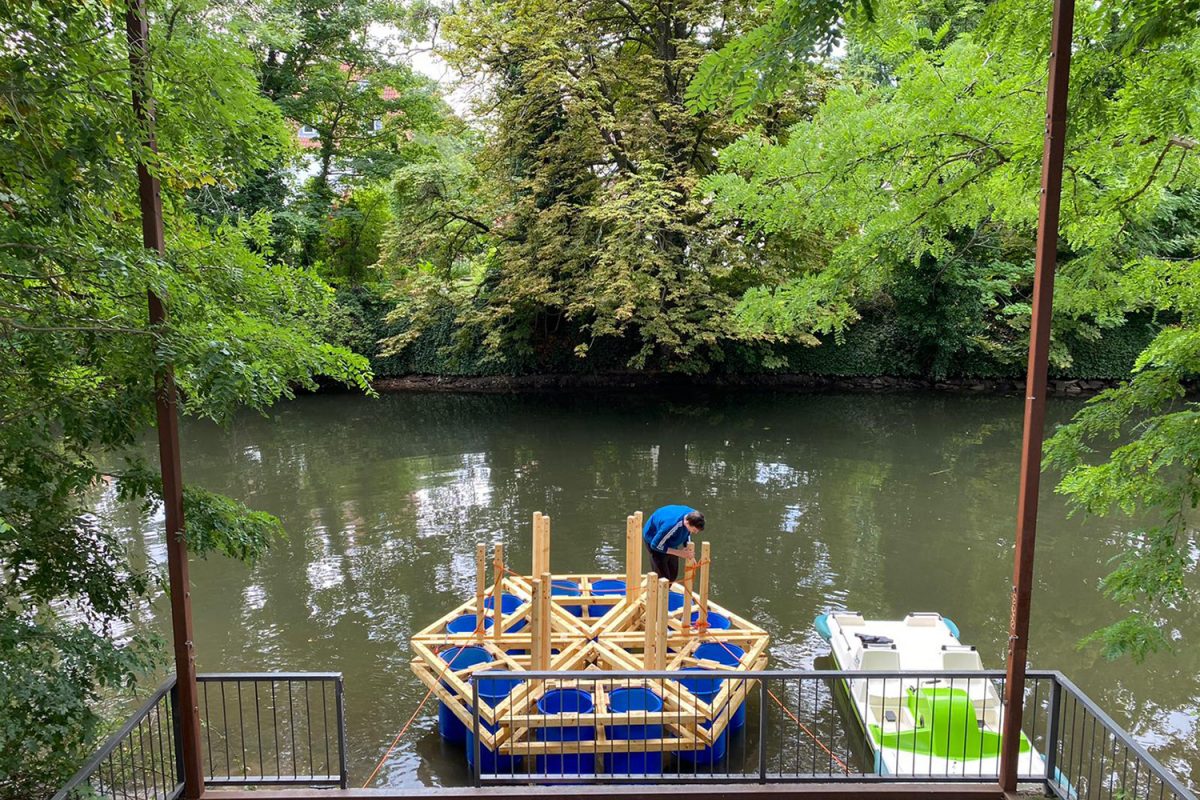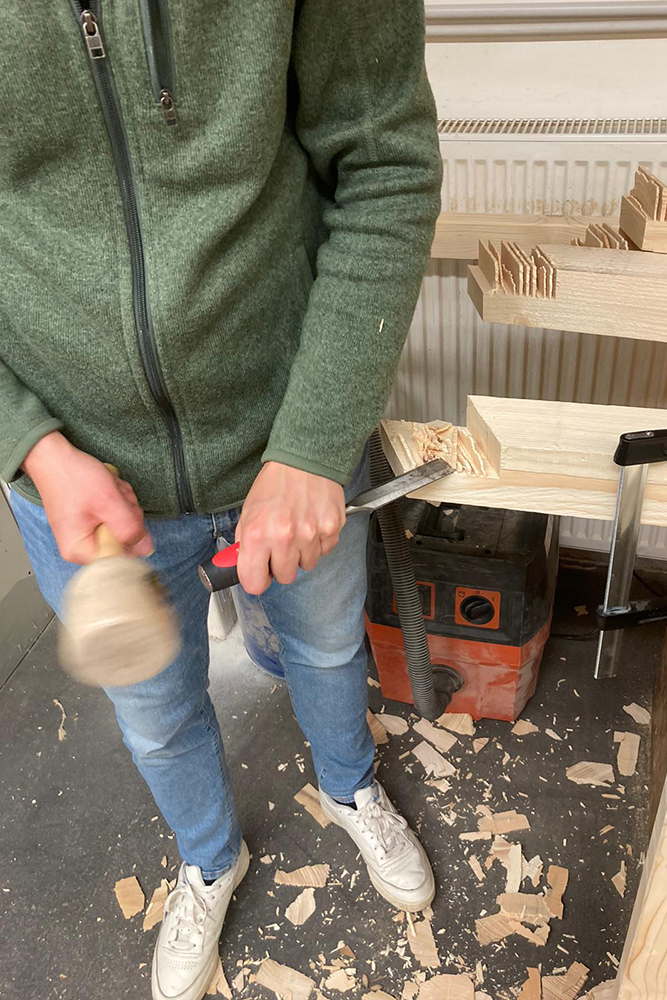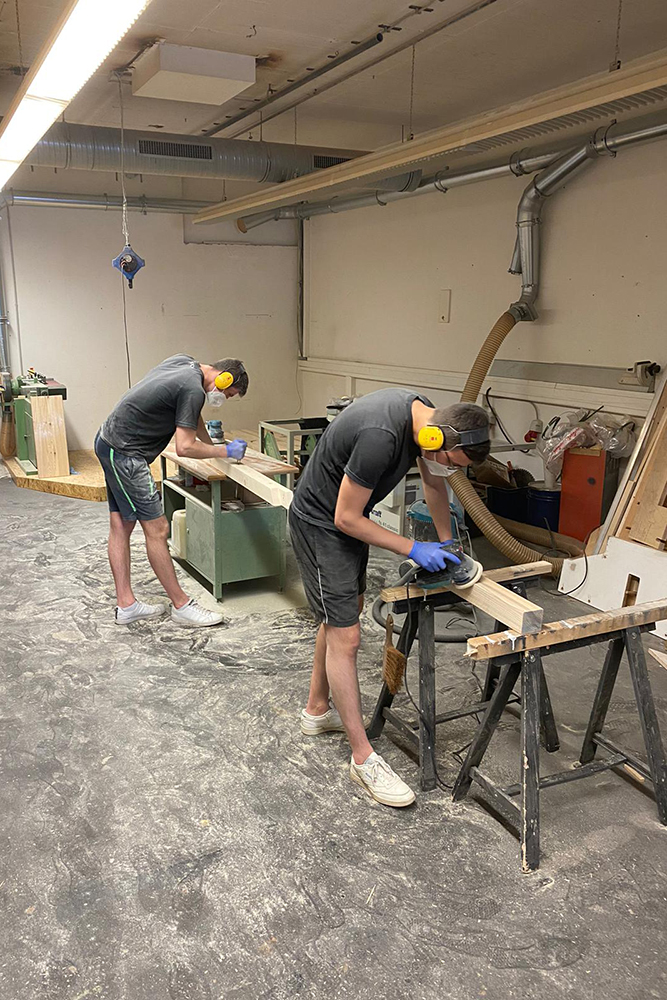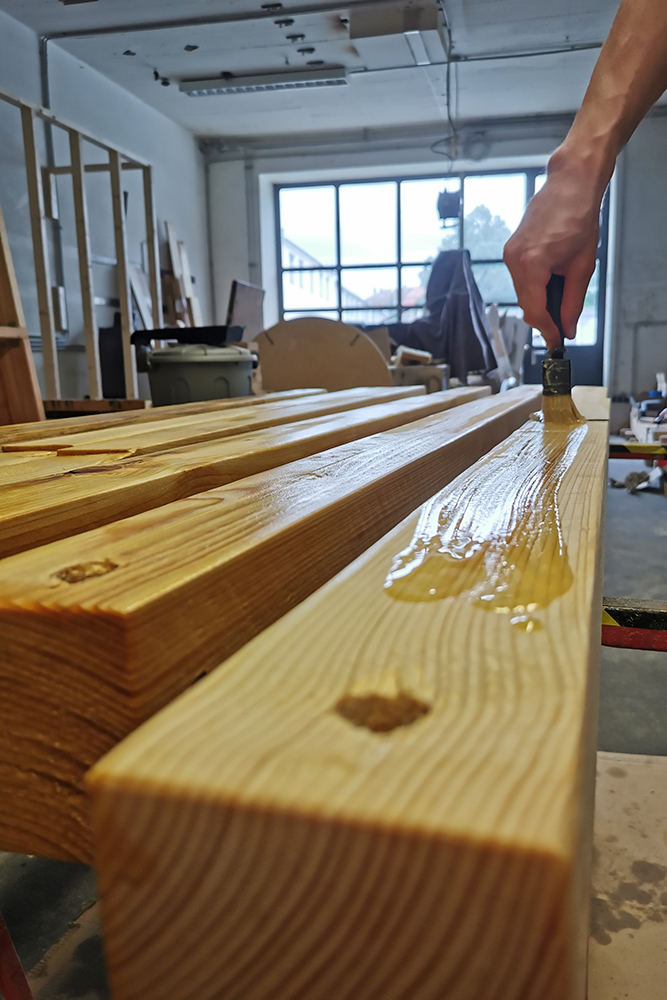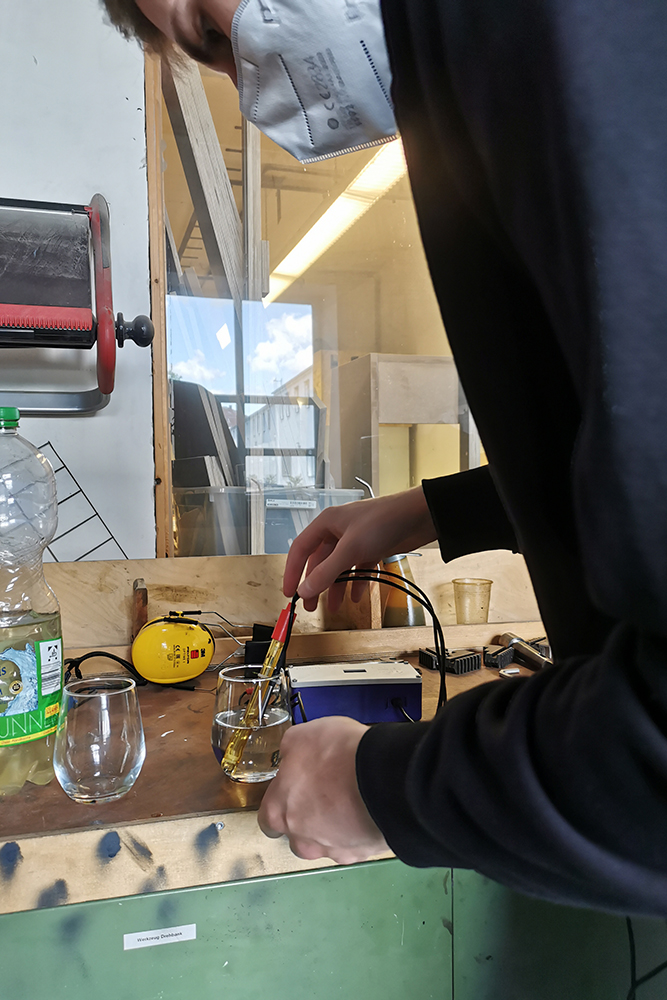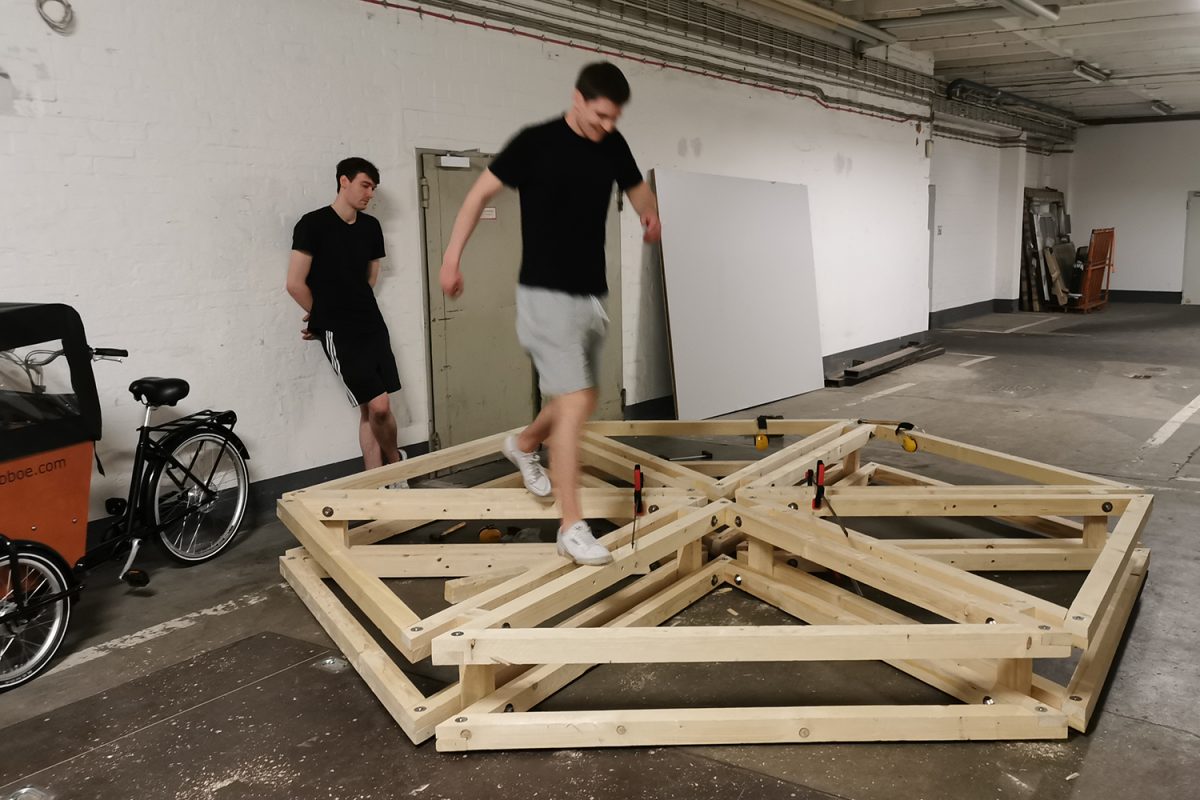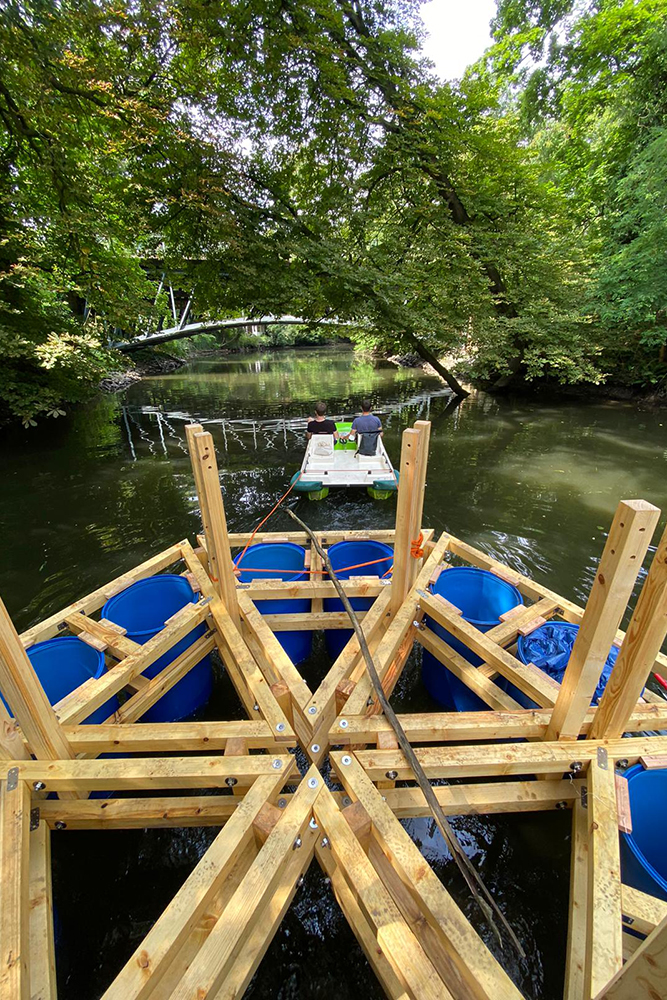Growing plants in a spaceship on the Oker Architecture students have built an aquaponic raft
A spaceship has landed on the Oker. At least that’s how it looks when you look down on the river in Braunschweig from the Wendentor Bridge towards the campus. However, the futuristic-looking structure that has landed on the riverbank is not a visit from distant galaxies, but an aquaponic raft. It was designed and built by architecture students Julian Tesche, Philip Schreiner and Kilian Schrader in cooperation with the Protohaus. They told us what it was for …
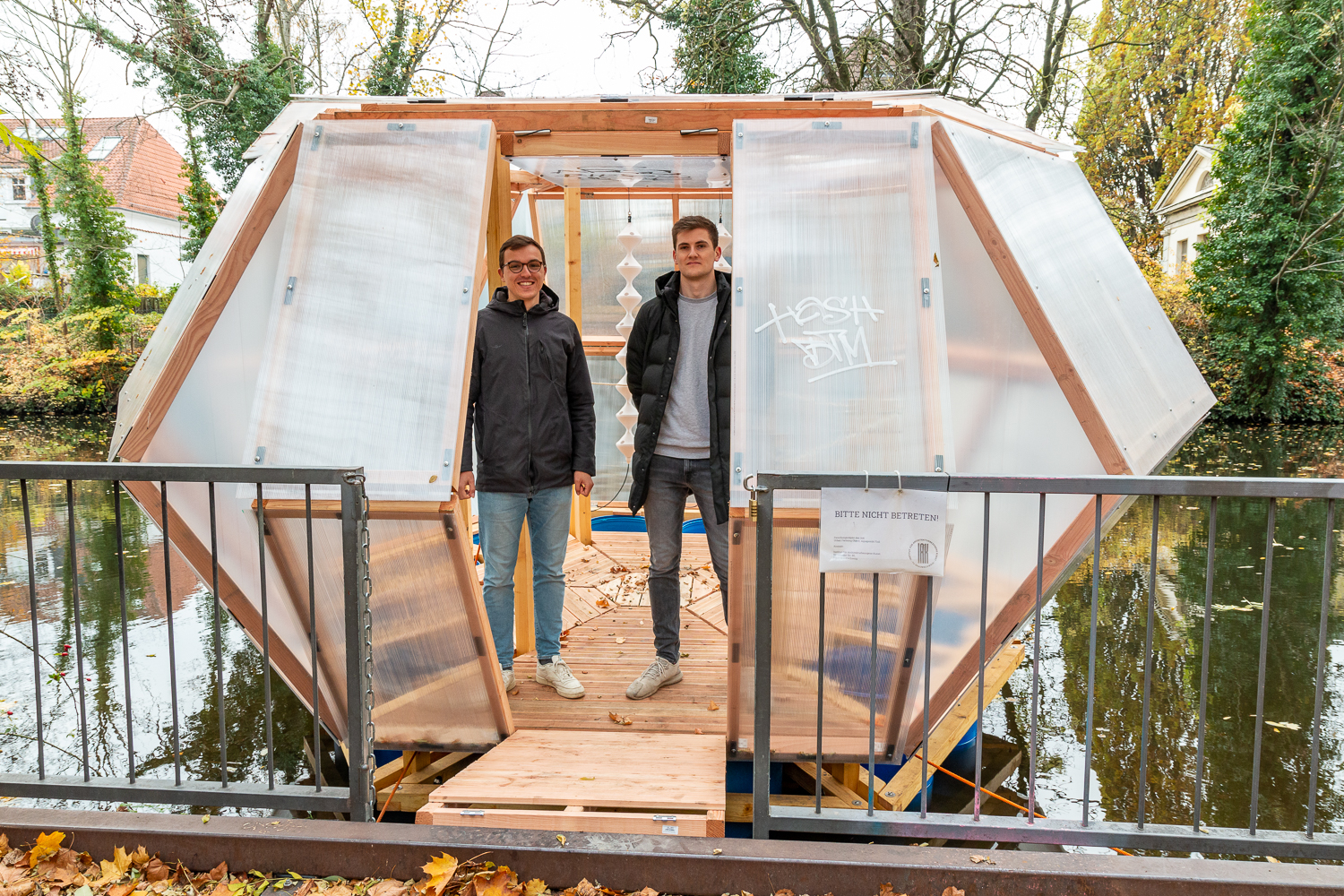
Philip Schreiner and Julian Tesche in their aquaponic raft. Photo credit: Kristina Rottig/TU Braunschweig
During the non-lecture period of the 2021 summer semester, the students gradually built the floating vehicle. Beforehand, they had registered the project at the Institute of Architecture Related Art (IAK) as a free Master’s design. “We wanted to put our design into practice and knew that this was possible at the IAK,” says Philip Schreiner. Professor Folke Köbberling was immediately receptive to the budding architects’ idea: “Realising a ‘free project’ in architecture is a great opportunity to keep everything from the design to the realisation in one hand. With a 1:1 realisation, which almost always takes place in the IAK, the work often only really begins after the design. Funds have to be applied for, statics have to be drawn up and possibly helpers have to be organised. With the hydroponic raft, interdisciplinary contacts were also important.”
So the students were able to start their construction at the Protohaus Makerspace in Braunschweig, which made the workshop available to them for this purpose. “We are very grateful for this support,” says Philip Schreiner. The three of them were in the workshop almost every day. “It was great fun not to work only digitally and instead to think about how things fit together that we usually only draw. While building, we found out how some things work or don’t work.”
Feed barrels become floating bodies
For the construction of the raft, the students partly used scrap wood or material from donations. For example, they received twelve empty feed barrels from a farmer, which now serve as floats. The walls and roof are made of sheeting, just like in a greenhouse. The standing surface consists of six wooden triangles. “We designed the raft so that we can easily take it apart again,” says Julian Tesche. Another advantage of the modular construction: it made transporting it to the water easier. The students first assembled the entire raft at the Theaterwall and then pulled it to its current location in two stages with the help of pedal boats.
Next year it will be used to teach pupils about aquaponic cycles in workshops at the Protohaus. But what actually is aquaponics? It is a process that combines aquaculture (controlled breeding of fish and the like in public waters) and hydroponics (plant cultivation without soil). In the recirculation system, water from fish farming is actually reused to supply the cultivated plants with nutrients. The students’ idea for the Oker: Hydroponic crops remove excess nutrients from the river and then return the purified water. A win-win situation: crops can grow on the water, and the water of the Oker could thus be “purified”. The students see aquaponics and hydroponics as a complement to current agriculture: water-saving, regional and inner-city.
Solar power for the pump
In order to familiarise the students with the process, they will also build their own hanging structures in which the plants can grow. A pump, for which a solar panel on the roof generates electricity, is used to transport the river water to the plants. There are also plans to install microcontrollers to control the pump and a weather station to measure temperature and solar radiation. Lettuce, beans and other low-yielding plants are to grow here. The students have already been successful with their experiments at home. “We achieved good results with the Oker water,” reports Julian Tesche. “We didn’t have to add any other nutrients.”
In addition to the practical experience they gained while building the raft, the three students see the project as an experiment to see if such a recirculation system is possible in the city centre. What are good substrates? Can plants bind heavy metals? These are questions they are continuing to explore. “And we want to draw attention to aquaponics.” With the raft, that will surely succeed.

